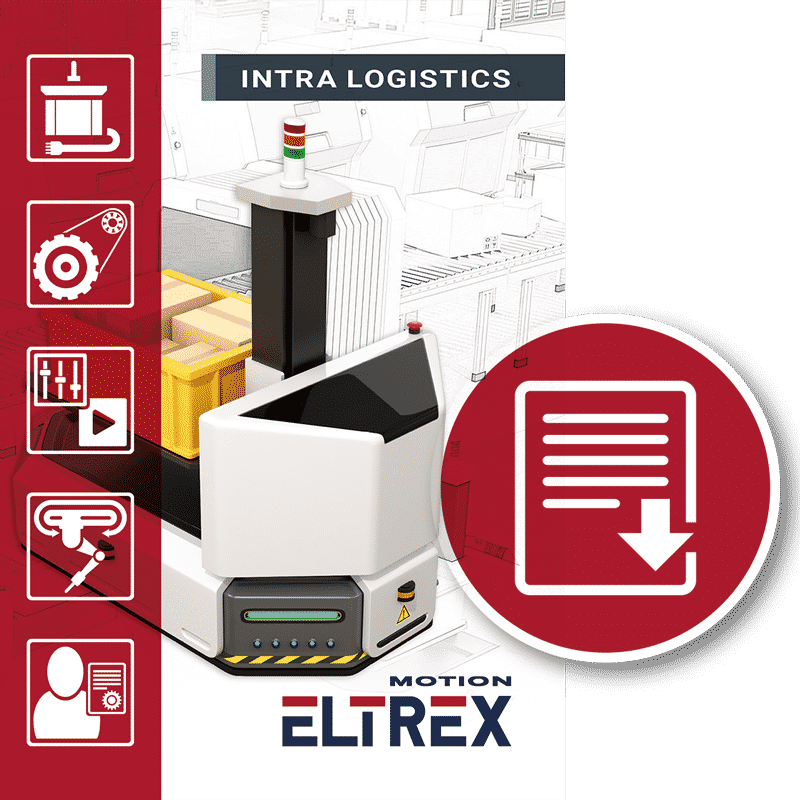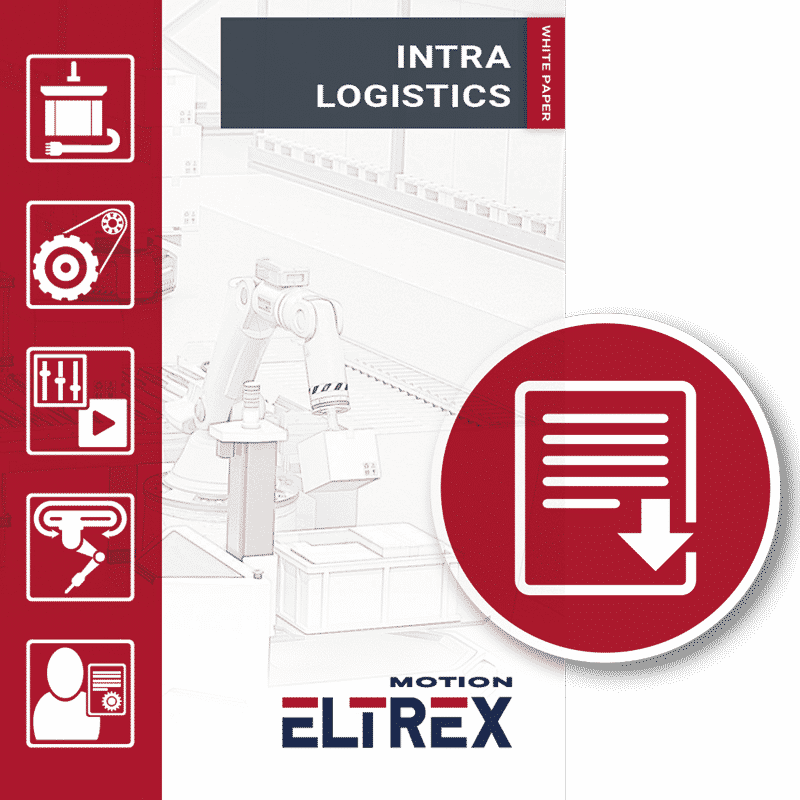Within intralogistics, the flow of information and material goods is constantly being optimised and managed through increased automation and integration. The developments in the field of motion control are therefore moving at a rapid pace. The use of AGVs (Automated Guided Vehicles) to move products is therefore increasing. This is reflected in the huge variation in the types of AGVs and the conditions they have to meet. For this white paper, we would like to share an interesting customer case with you.
Customer request – AGV Development
A customer contacted Eltrex Motion regarding the development of a new AGV. They wanted to develop a new AGV that could be used in their production and warehouse to move packages. To achieve this, the AGV had to be equipped with a drivetrain and an additional lifting movement. A package is first taken off the conveyor belt and is lifted in a slow controlled movement and lowered quickly, so that the AGV can then drive off quickly. The vehicle can only be driven when the package is in the lowest position. In addition, the AGV had to be able to operate in an environment where the temperature varies between 10 and 35 degrees Celsius.
Eltrex Motion offers various motion solutions, but in order to select the right components for this customer, we first identified the challenges. Both the driving and the lifting of packages had to be driven, and the desire was to use as many of the same components as possible. This offers advantages in terms of maintenance costs of the AGV. In addition, the energy efficiency of the AGV is highly important. The battery has a voltage of 48 VDC. The drives should therefore use the battery capacity as efficiently as possible, so that the AGV can be used for longer before it needs to be recharged.



